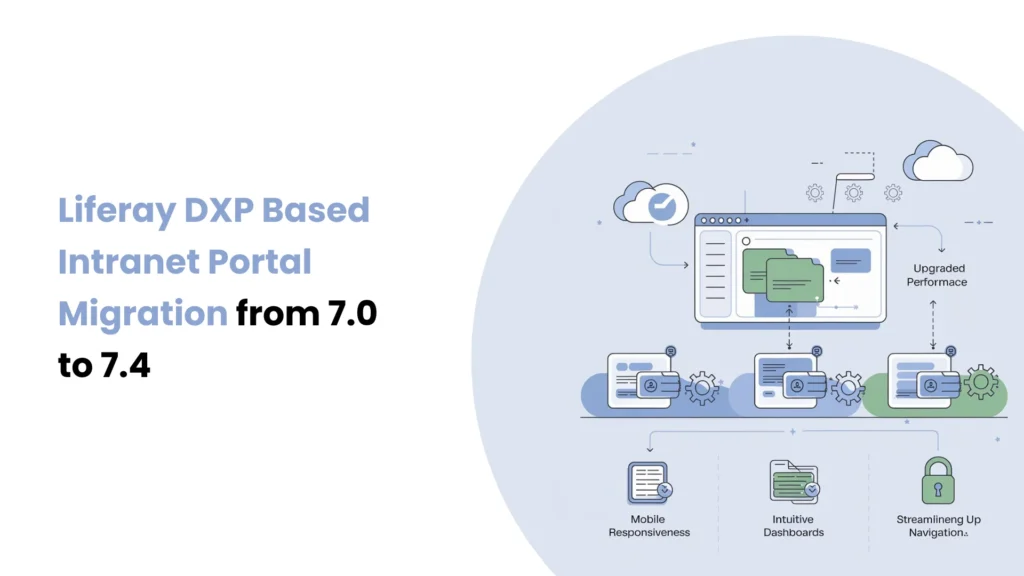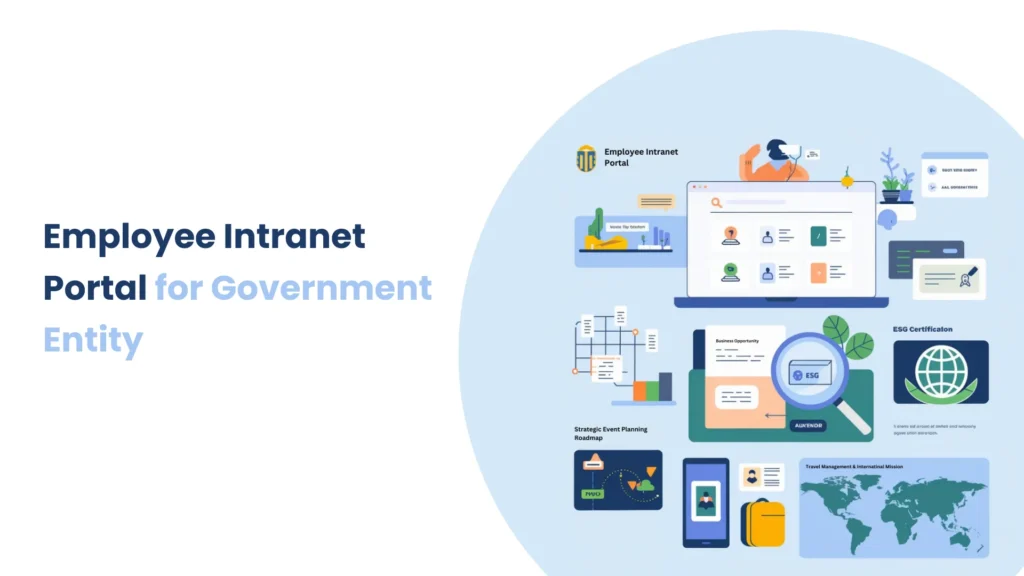Introduction
Content versioning and controlled releases play a key role in providing high-quality digital experience on websites and intranets, including digital experience platforms in the modern setting. Liferay DXP 7.4 enhances this process significantly by offering the Publications feature, an effective system of managing content change in a safe, controlled and collaborative manner.
Prerequisites
- Liferay DXP/Portal 7.3+
What are Publications in Liferay?
Versioning and change management Publication has a versioning and change management system known as publications, which allows bundling of configuration assets and content on isolated publications before being pushed live. It is kind of Git-like staging of your contents and page updates.
Users create a publication with their intended changes, make and test their changes in the publication as well as publish the bundle in a single push.
This ensures :
- Less opportunity to publish half done work
- Transparency in regard to which alterations are being rolled out
- Easy conflict and rollback
This attribute is particularly useful to businesses that have complicated business processes and content management policies.
Key Features of Publications
Content Isolation :
Every publication is its own sandbox in which you can perform as many changes as you want to both the pages and their content (e.g. web content creation, page updates, content modification, layout) without touching the live site.
Change Tracking :
Liferay would automatically keep a record of everything that occurred in a publication, including addition of new assets and changes made in configurations, and provide a list of the modifications in an easily digestible fashion so they can be reviewed prior to publication.
Collaboration :
The same publication can be worked on by multiple users so that teams can easily be able to work together when updating over a large area. The roles and responsibilities in a publication can also be given out.
Rollback and Conflict Detection :
Publications provide version history and conflict detection, thus in case there is someone who made changes on the same content on the live site, when you are typing something on a publication, Liferay will warn you on the publish.
Custom Staging Options :
Publications serve as the new staging system that is an enhancement of the much older Liferay Staging system. They are easier to use, more efficient and more Agile-friendly.
Steps to use Publications in Liferay
Step 1 : Enable Publications
- Open the Global Menu.
- Navigate to Applications > Publications.
- Toggle Enable Publications.
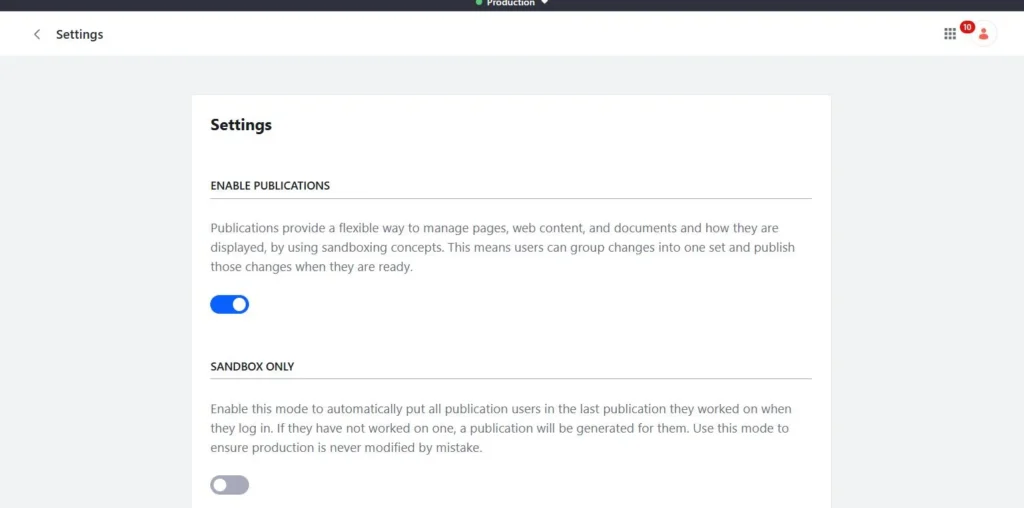
When it is activated, it lets you choose where you want to go in your Liferay instance by clicking on the drop-down menu Publications bar.
Step 2 : Create a Publication Template (Optional)
Press Options in the Application Bar and choose Templates.
Click on Add (Add Button).
Name the template and give a description.
Click Invite Users to determine the default users and assign them roles to publications made using the template.
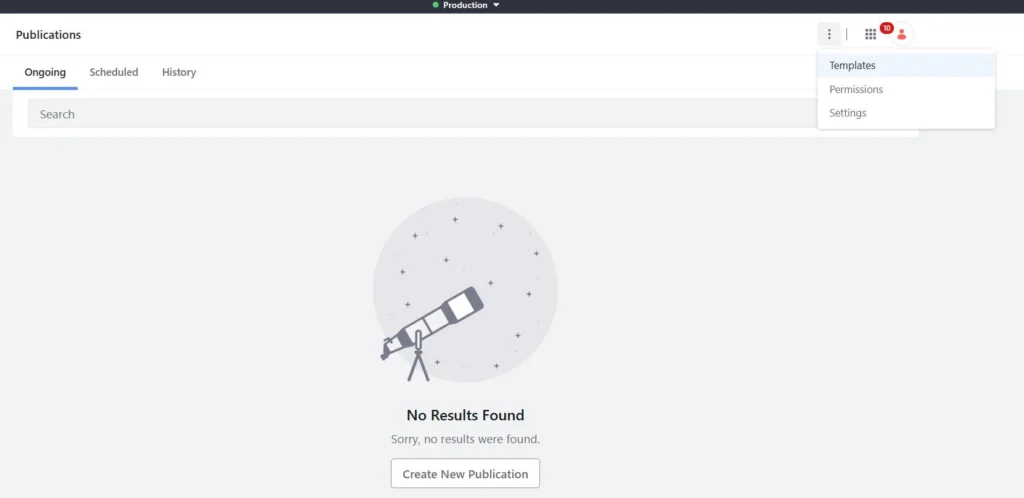
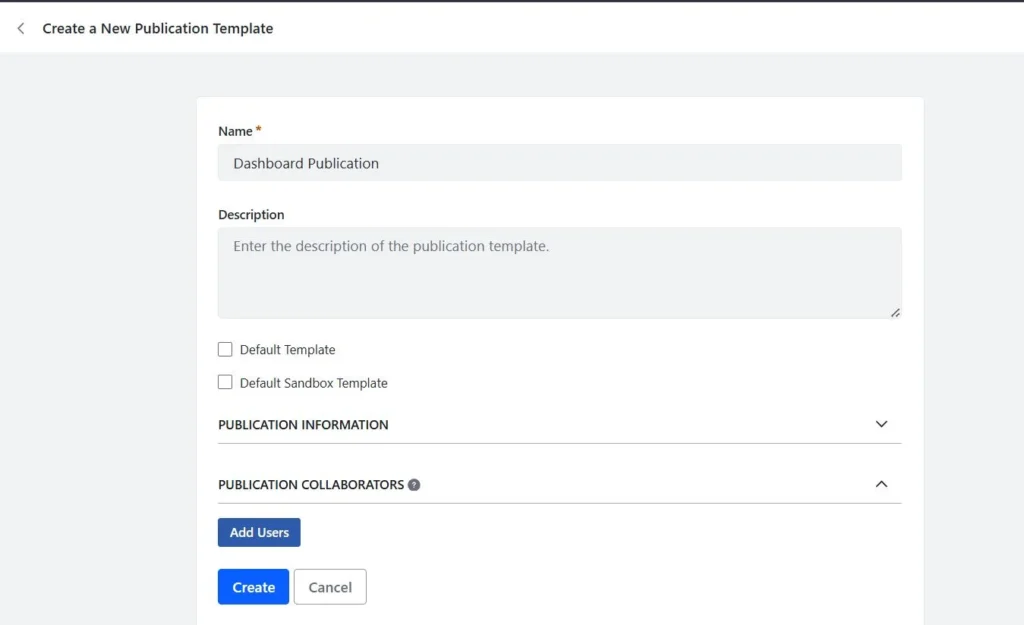
Templates are useful for teams with repeatable publishing flows.
Step 3 : Creating Publications
- Open the Publications application and click Add.
- Enter a name and description for the publication.
- Click “Create New Publication”.

You’re now working in a draft context. Any changes won’t affect the live site yet.
Step 4 : Using the Publications
- Edit web content, pieces, assets or pages.
- See the preview of the changes applied to the site-this is only possible here.
Example: Creating Web Content
- Go to Content & Data > Web Content.
- Click Add to create a new web content article.
- Enter your content details (title, body, images, etc.).
- Click Publish — this saves the content within the publication, not on the live site.

- Place the web content on a page.

- Switch to Production from the dropdown.
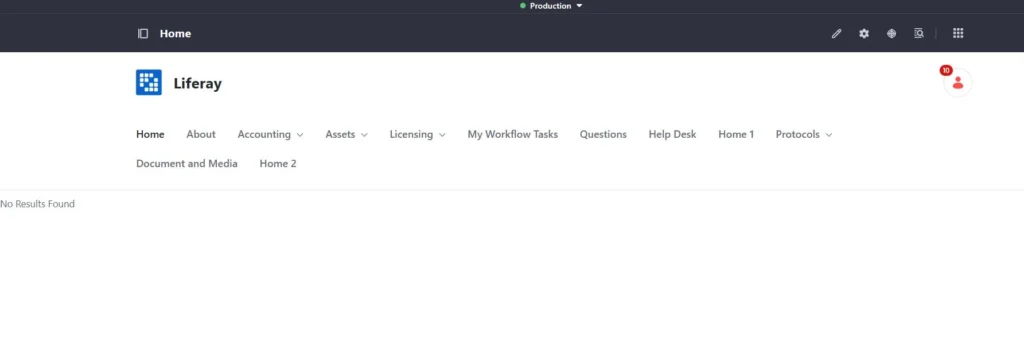
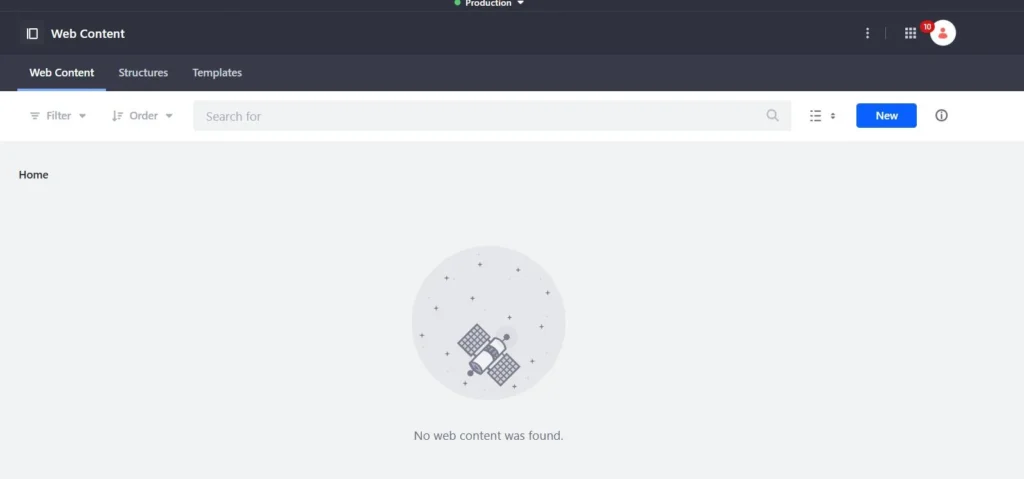
Your stagged changes will be securely kept within the publication until the time when you want to publish it.
Step 5: Review and Publish
- To take a look at what has been changed, one should open the publication and select View Changes.
- Provided that everything is prepared, click Publish.
- Publish the changes one at a time.
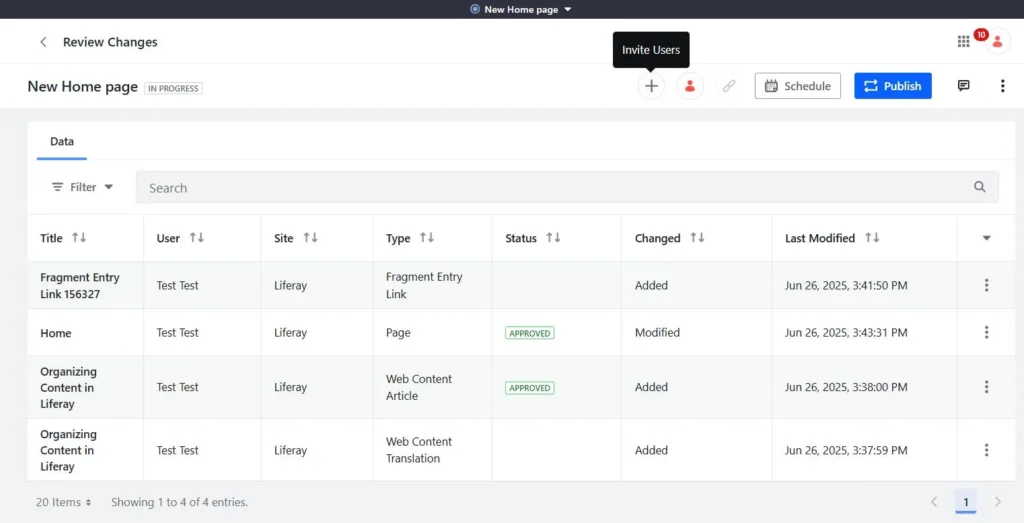

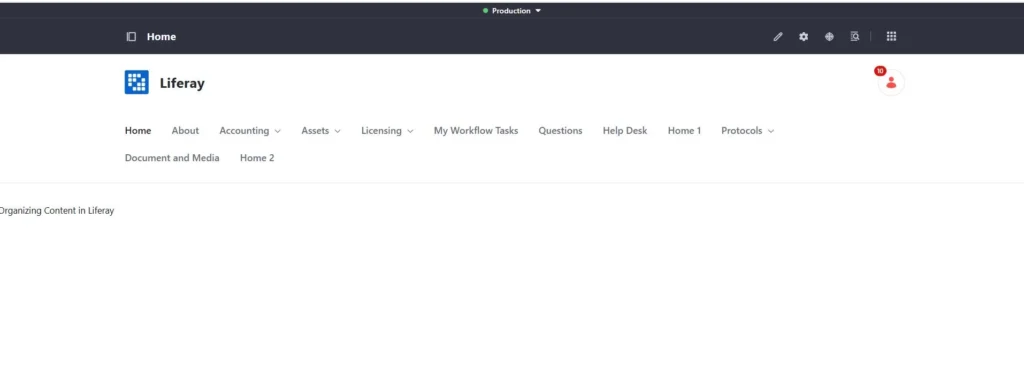
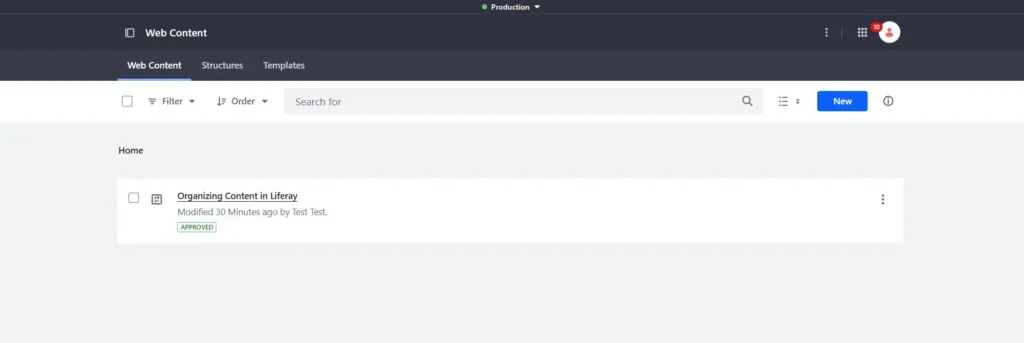
In case conflicts are found (e.g., live content altered in the meantime your draft was found), Liferay will ask you to fix them, after which the publishing will be possible.
Conclusion
Liferay provides the massive breakthrough of content lifecycle management with the Publications feature. It minimizes the publishing risks and improves the productivity by making the content editable and traceable, as well as working collaboratively. Need to update your site on numerous pages, launch the time-bound campaign, or extend the (often complicated) workflow of handling the content? Publications provide an efficient, modern tool that fits modern agile digital realities.
Publications are not a mere feature and can even be called a game-changer to teams who wish to improve their content governance and deployment strategies.




